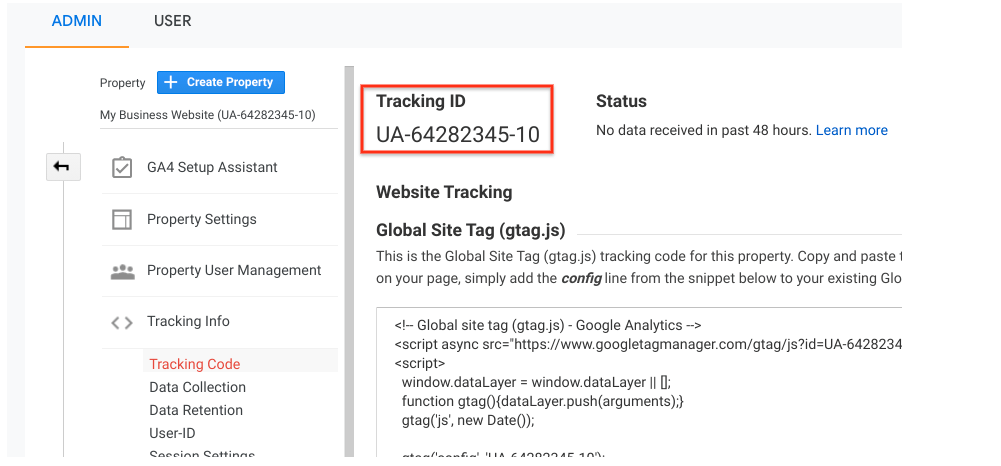Dive into Analytics: What Data Does Google Analytics Prohibit Collecting?
Dive into Analytics: What Data Does Google Analytics Prohibit Collecting?
Blog Article
Browsing the Intricacies of Information Collection Limitations in Google Analytics: What You Required to Know
Under its seemingly simple user interface lie intricacies that can impact the precision and dependability of the information it gives. Comprehending the complexities of data collection constraints in Google Analytics is vital for making informed choices based on the insights obtained from the system.
Information Disparities in Google Analytics
Occasionally, data disparities may occur in Google Analytics, requiring an extensive understanding of the platform's details to efficiently attend to and fix these inconsistencies. These discrepancies can come from different sources, such as execution issues, information tasting, filters, and even robot website traffic. One typical reason for data disparities is disparities in between data accumulated by means of JavaScript monitoring code and information imported from various other sources like Google Advertisements or Search Console.
To attend to these discrepancies, it is important to very first conduct a comprehensive audit of your monitoring arrangement. Verify that the monitoring code is appropriately implemented on all pages, look for any type of filters that may be changing the information, and guarantee that there are no redirects or various other technological concerns disrupting data collection. Furthermore, acquaint yourself with common mistakes, such as cross-domain tracking errors or misconfigured goals.
Tracking Difficulties and Solutions
Provided the complexities of information disparities that can emerge in Google Analytics, dealing with tracking challenges and executing reliable services ends up being vital for making certain precise and trustworthy information evaluation. One common tracking challenge is accurately tracking cross-device and cross-platform individual communications. Customers today engage with web sites and applications across various devices and systems, making it testing to connect activities to a single user properly. To conquer this, carrying out individual ID monitoring can assist link interactions throughout various devices under one user identifier, giving a much more alternative view of customer habits.
Another monitoring challenge originates from ad blockers and privacy laws, which can hinder the collection of exact data (What Data Does Google Analytics Prohibit Collecting?). Solutions to this consist of carrying out server-side tracking, which bypasses client-side restrictions, and valuing individual privacy preferences by providing clear opt-in systems for data collection

Comprehending Experiencing in Reports
Sampling in reports gives a technique for assessing big datasets successfully while preserving analytical significance. In Google Analytics, tasting occurs when the quantity of information quized surpasses a certain threshold, causing the system analyzing only a section of the data to provide insights. While tasting can speed up record generation and minimize handling demands, it is vital to understand its ramifications on the precision and reliability of the outcomes.
When managing tested information, it's important to consider the potential margin of mistake that may arise as a result of examining just a subset of the total dataset. The precision of the insights acquired from tested reports might vary, and users ought to interpret the findings with caution, particularly when making data-driven choices based upon these reports.
To browse tasting in Google Analytics effectively, users can discover choices such as readjusting the tasting degree, using customized report configurations, or leveraging Google Analytics 360 for higher data limits and more exact reporting capabilities. By recognizing the subtleties of redirected here tasting in records, users can make informed choices and attract dependable verdicts from their data analysis efforts.
Impact of Cookie Removal on Data

In addition, cookie removal can alter market and rate of interest data, as Google Analytics depends on cookies next to classify individuals based on their surfing patterns. Without this details, marketing experts may have a hard time to create targeted projects that reverberate with their target market. To mitigate the effect of cookie deletion, businesses can encourage customers to opt-in for information tracking, utilize other monitoring techniques like individual IDs, and on a regular basis keep an eye on information disparities to make sure data honesty in Google Analytics.
Enhancing Information Accuracy With Filters
To enhance the accuracy and dependability of information in Google Analytics, executing filters is a crucial method for improving information accuracy. Filters allow users to look via and refine page the data collected, making certain that exact and just relevant details is included in the evaluation.
Filters not just assist in omitting unwanted information yet additionally enable for the personalization of views to concentrate on certain sections or patterns of user communications. In verdict, using filters in Google Analytics is vital for enhancing data precision and making sure that notified choices are made based on reliable details.
Conclusion
In conclusion, browsing the complexities of data collection restrictions in Google Analytics requires a deep understanding of information inconsistencies, tracking obstacles, sampling in records, the effect of cookie deletion, and making use of filters to enhance information accuracy. By addressing these obstacles and using appropriate options, organizations can make certain the reliability and precision of their data evaluation for informed decision-making.
One typical reason for information disparities is disparities between information collected by means of JavaScript tracking code and data imported from various other sources like Google Advertisements or Search Console. What Data Does Google Analytics Prohibit Collecting?.
Provided the complexities of data disparities that can emerge in Google Analytics, addressing monitoring obstacles and carrying out efficient remedies becomes extremely important for guaranteeing reputable and precise information evaluation. In Google Analytics, sampling occurs when the volume of data quized goes beyond a certain limit, leading to the system examining just a portion of the data to give insights. To alleviate the influence of cookie deletion, companies can encourage customers to opt-in for information monitoring, utilize other monitoring techniques like customer IDs, and on a regular basis check data inconsistencies to make certain information integrity in Google Analytics.

Report this page